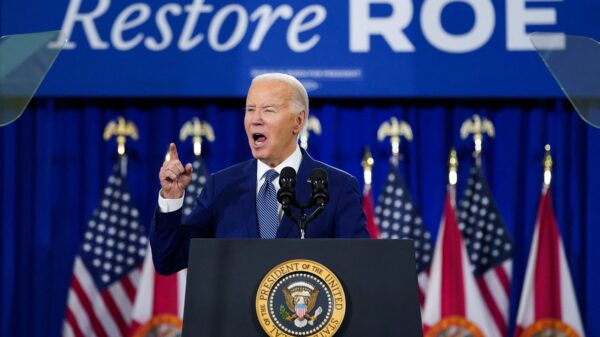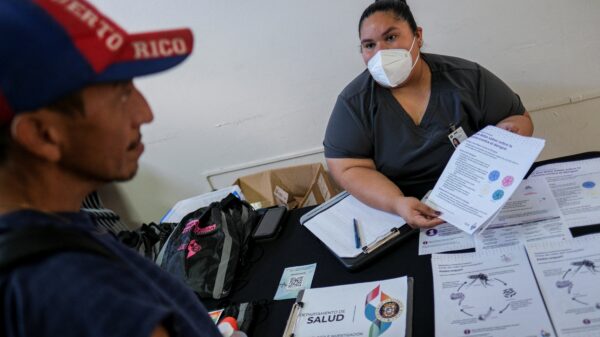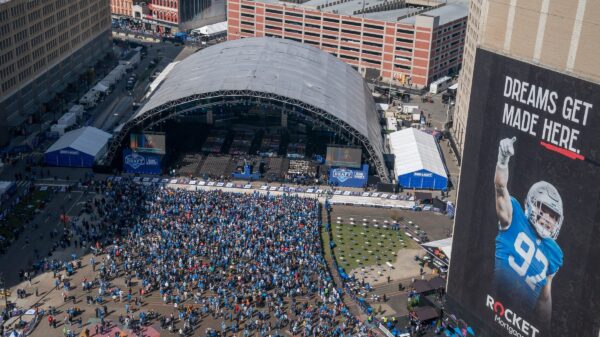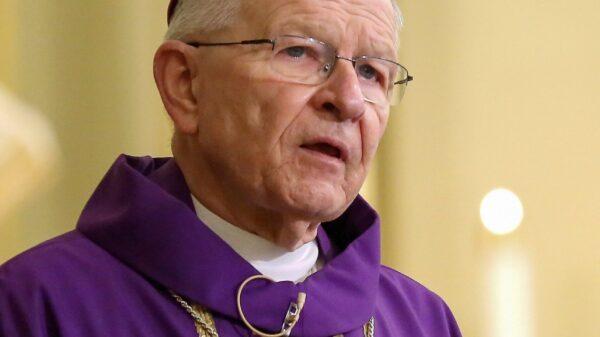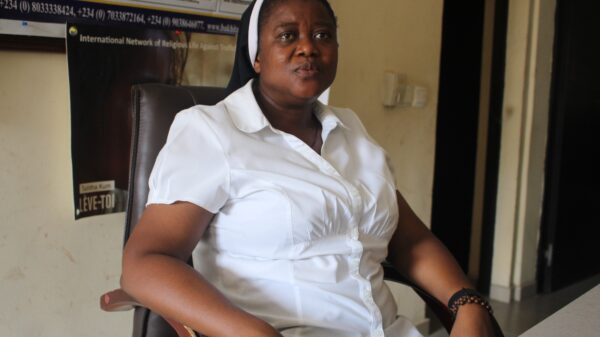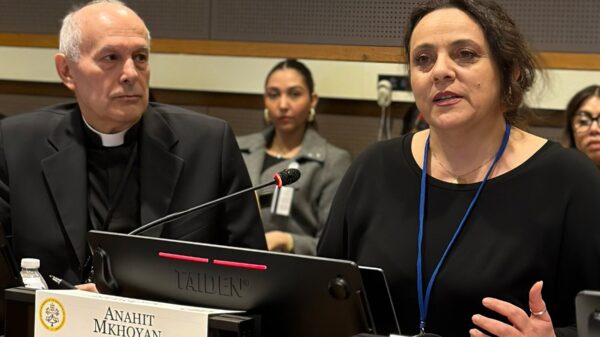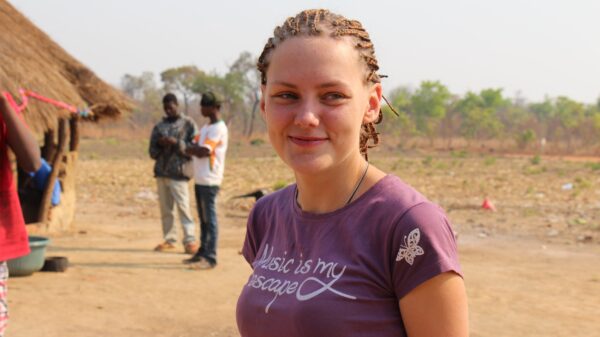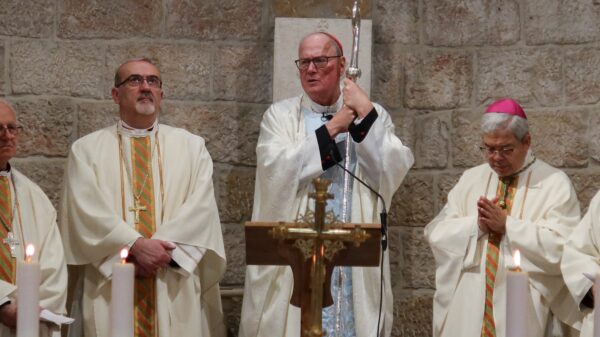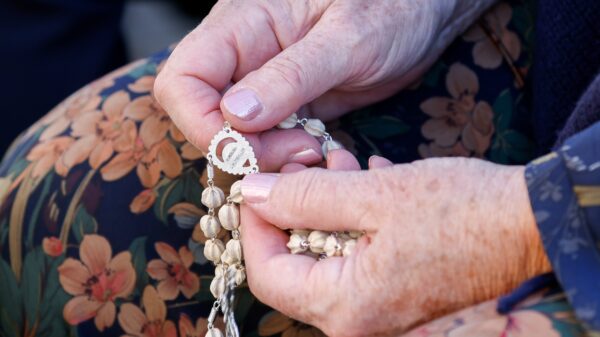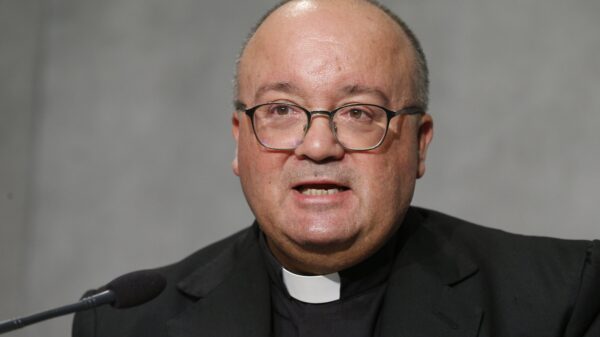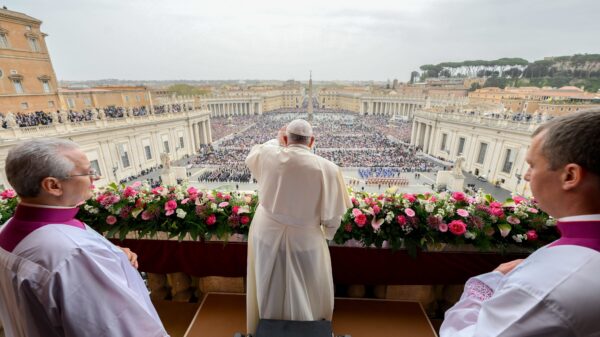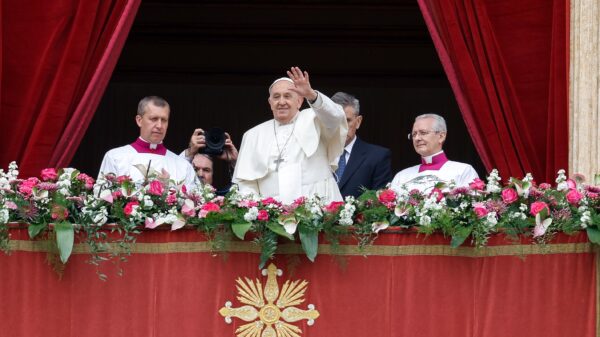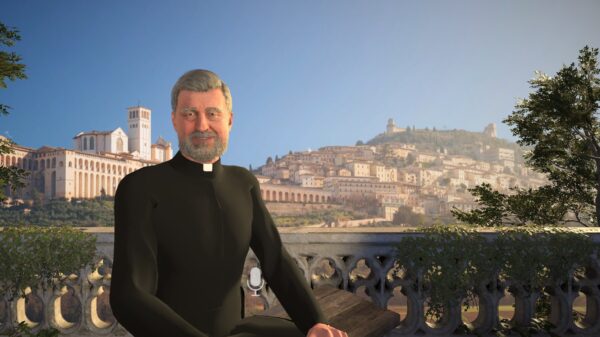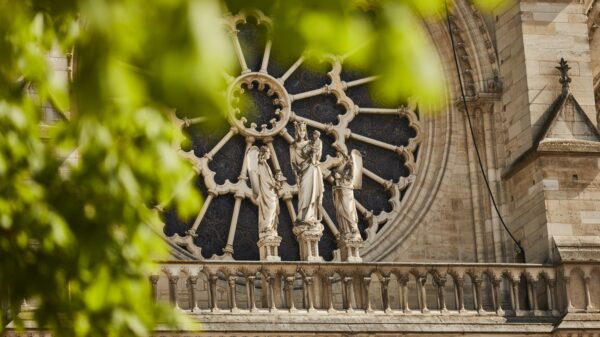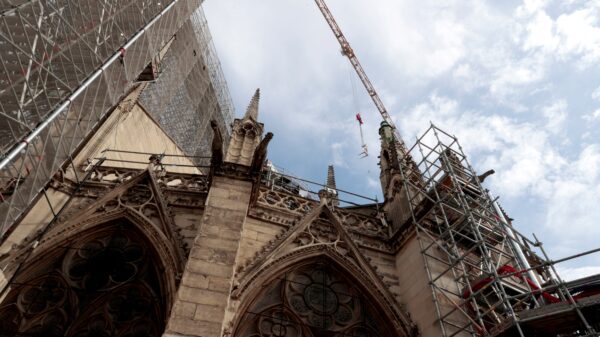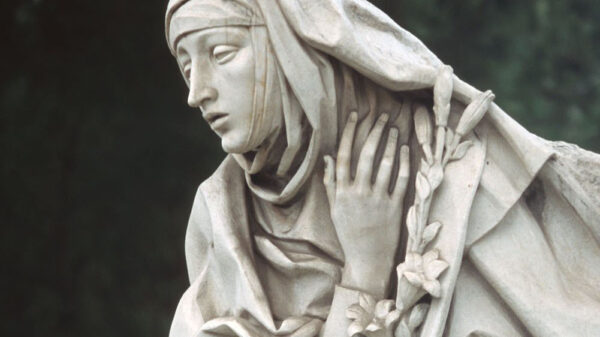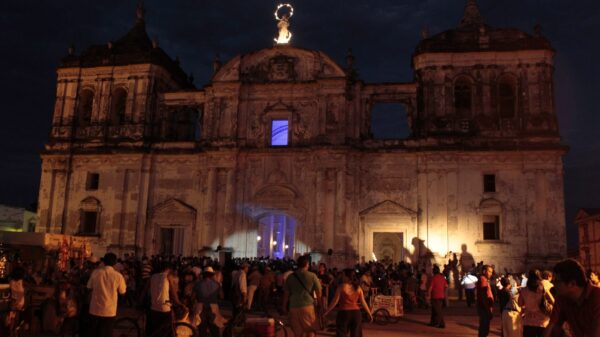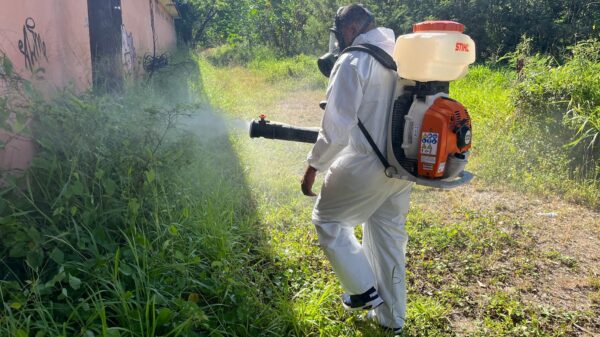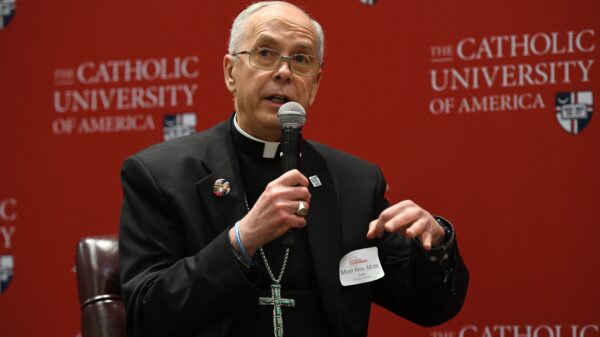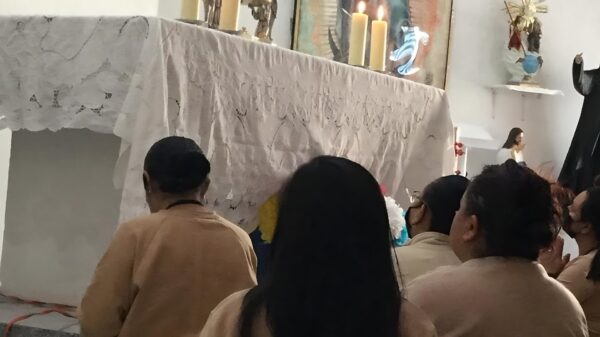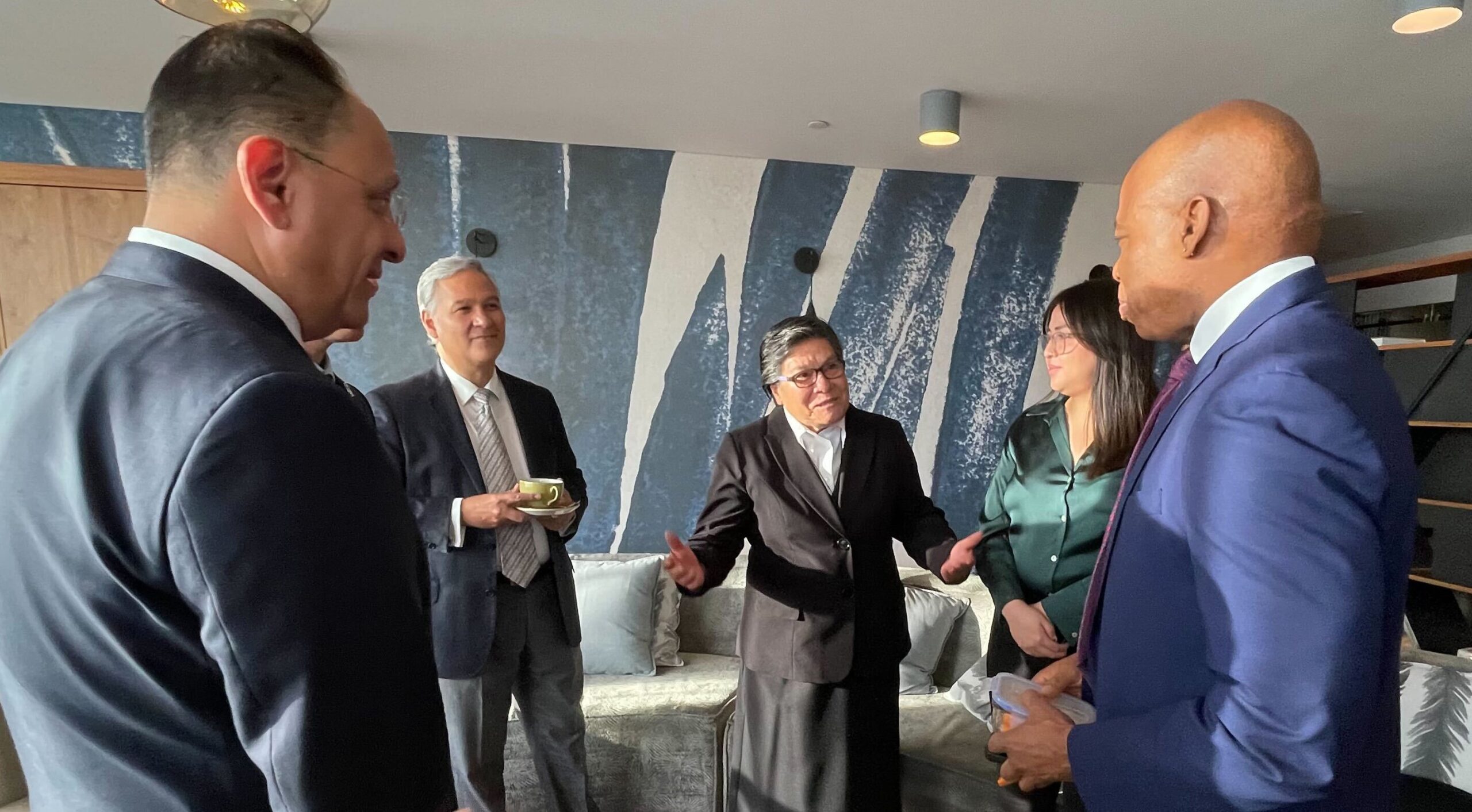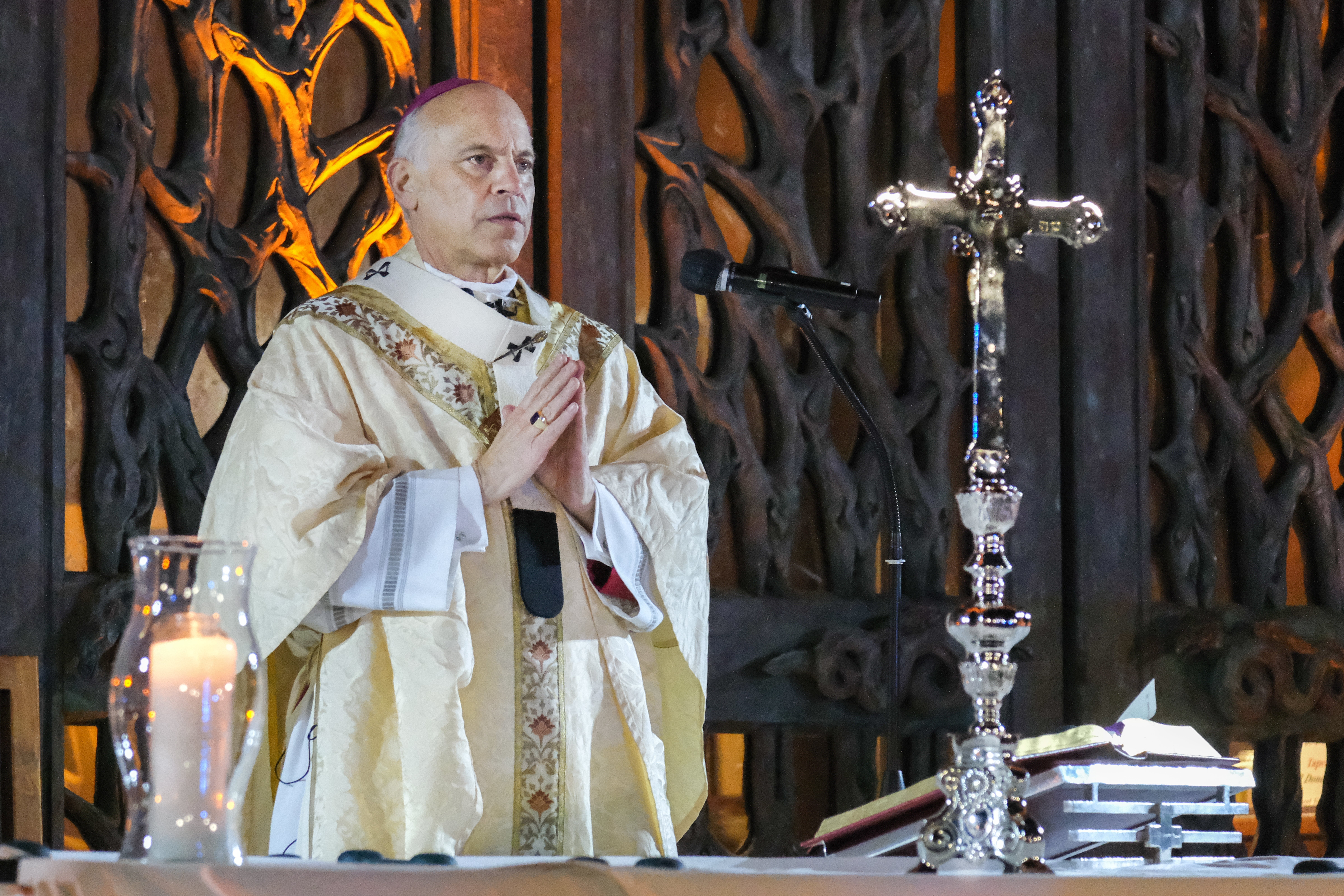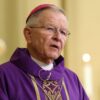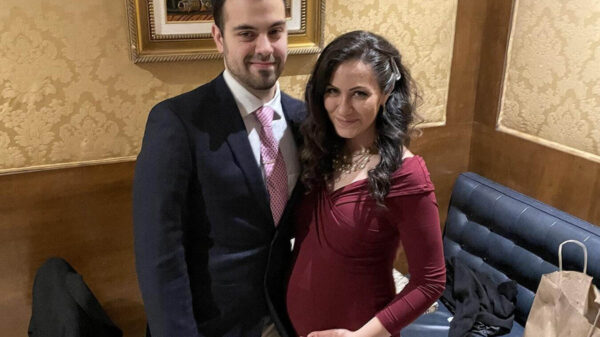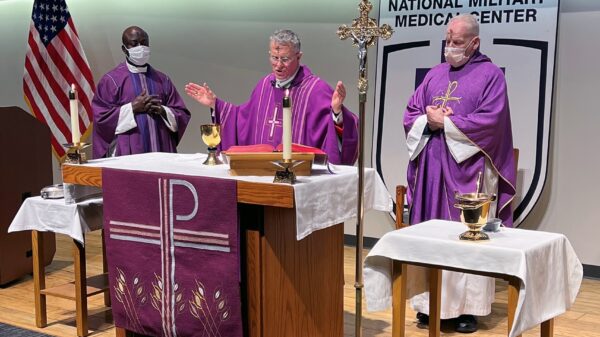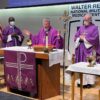BUENOS AIRES (OSV News) — As New York City Mayor Eric Adams finalized his Latin American trip Oct. 8, Catholics in the region noted it started with an Oct. 5 visit to the Basilica of Our Lady of Guadalupe in Mexico City, a shrine to the patroness of the Americas and the source of inspiration for many of the migrants undertaking arduous journeys toward the United States.
On the same day he also visited a Mexico City migrant shelter operated by the Josefina Sisters, known as CAFEMIN, where he said of the director, Sister María Magdalena Silva Renteria, “She’s the modern-day Mother Teresa, because she has shown just real compassion for how she is treating those who are fleeing a destabilizing situation in their countries.”
With migrants arriving at the U.S.-Mexico border in seldom-seen numbers — and straining resources in major U.S. cities — Adams came to “understand the flow of migrants here to New York City,” he said in a video recorded on a plane to Mexico.
But he also wanted to send a message that his city was out of room.
“Our hearts are endless, but our resources are not,” Adams said in an Oct. 5 media briefing from Mexico.
“We want every single person who is thinking about risking their lives and their children’s lives to come to New York City to know the truth about what we are dealing with,” he said the next day during a briefing from Ecuador.
“We have to … push back on the propaganda that is giving people false hopes and false promises,” Adams said Oct. 7 from the Colombian town of Necoclí, a jumping off point for migrants traversing the treacherous jungle of the Darién Gap which separates Colombia and Panama.
Since April 2022, more than 116,000 migrants and asylum-seekers have arrived in New York City, according to Adams. It’s a tally he has said threatens to “destroy” the city.
Catholic organizations counseled the mayor on his visit. In Ecuador, he visited a shelter operated by Jesuit Refugee Service, or JRS, in the capital of Quito, which hosts refugees and migrants from Colombia and Venezuela who have fled armed conflict and political instability.
“We hope that what he saw, heard and experienced has given him a greater appreciation for the desperation that many of those who are forced to flee face when making those difficult decisions,” María Belén Carrillo, national director of JRS Ecuador, said in a statement, including also “the critical situation of the Ecuadorian population, caused by multidimensional poverty and the increase of international criminal organizations linked to narcotraffic.”
But the mayor’s message for migrants to avoid New York City and eschew the “false hopes” spread by smugglers is unlikely to dissuade many migrants, according to analysts, who point to push and pull factors such as despair in their home countries and the attraction of the United States.
“So long as the benefits of migration outweigh the costs, people will attempt it,” Eric Farnsworth, vice president of the Council of the Americas, told OSV News. “The U.S. economy is strong and unemployment is low, and the perception has grown that enforcement of U.S. laws is lax. … The flows can be managed but not ‘solved’ and current conditions have made them worse.”
More than 7 million migrants have left Venezuela since 2015 as political repression escalated and the country collapsed under calamitous economic policies.
The U.S. government Oct. 5 announced the resumption of deportation flights for Venezuelans — after extending Temporary Protected Status for an estimated 472,000 Venezuelans who were in the country prior to July 31. But Venezuelans are still heading northward.
“There’s a second migration” of Venezuelan migrants, said Roy Arías Cruz, border coordinator for Jesuit Migration Service in Costa Rica.
The first generation, he explains, moved to other South American countries. But those migrants “are looking toward the United States. And now there’s a flow of Venezuelans which is full of extended families,” Arías said.
The mayor’s admonishment to avoid misinformation is also impossible, according to analysts, as migrants often seek any signs of hope. Jesuit Father José Luis González pointed to the Temporary Protected Status ruling, which doesn’t apply to Venezuelans enroute. But it has raised hopes of admittance to the United States.
“This news will provoke an exodus of Venezuelans or provoke the Venezuelans who have spent months in Colombia or Panama to decide to continue moving onward,” said Father González, coordinator of the Jesuit Migrant Network in Guatemala. “All migratory movements are like this: they depend on information, which is sometimes true, sometimes false and sometimes lacking nuance.”
Complicating matters further are the poor relations the United States has with nondemocratic countries such as Cuba, Nicaragua and Venezuela, which have expelled large numbers of their citizens.
“The three dictatorships … promote this migration, not only because they cannot supply or respond to the economic needs of their citizens, but because there is a deliberate and premeditated interest in also weakening the United States through a mass migration,” former Nicaraguan diplomat Arturo McFields Yescas told OSV News.
McFields, who resigned as Nicaragua’s ambassador to the Organization of American States, pointed to policies such as Nicaragua removing visa restrictions for citizens of “failing countries.” In one case, the lenient visa policy prompted a surge in people from the West African country of Mauritania arriving in Nicaragua, then heading north toward the United States.
Migrants during the 2010s mostly hailed from Mexico and the northern triangle of Central America: El Salvador, Guatemala and Honduras.
Those numbers were surpassed at times in recent years by Venezuelans, Cubans, Nicaraguans and others. But the greatest growth in migrants arriving at the U.S. border over the summer has been Guatemalans and Hondurans rising by 266 percent and 133 percent respectively, according to an analysis by the Washington Office on Latin America, a think tank.
“People lost hope in the country,” Father Germán Calix, a parish priest in Comayagua, Honduras, and the former national director of Caritas, told OSV News.
Father Calix said 10 families have left his parish already this year for the United States.
“What the government is doing is not improving living conditions here (but) rather increasing its consulates” in the United States, he said. “People see bleak prospects here.”
David Agren, who writes for OSV News from Mexico City, is currently in Buenos Aires.


